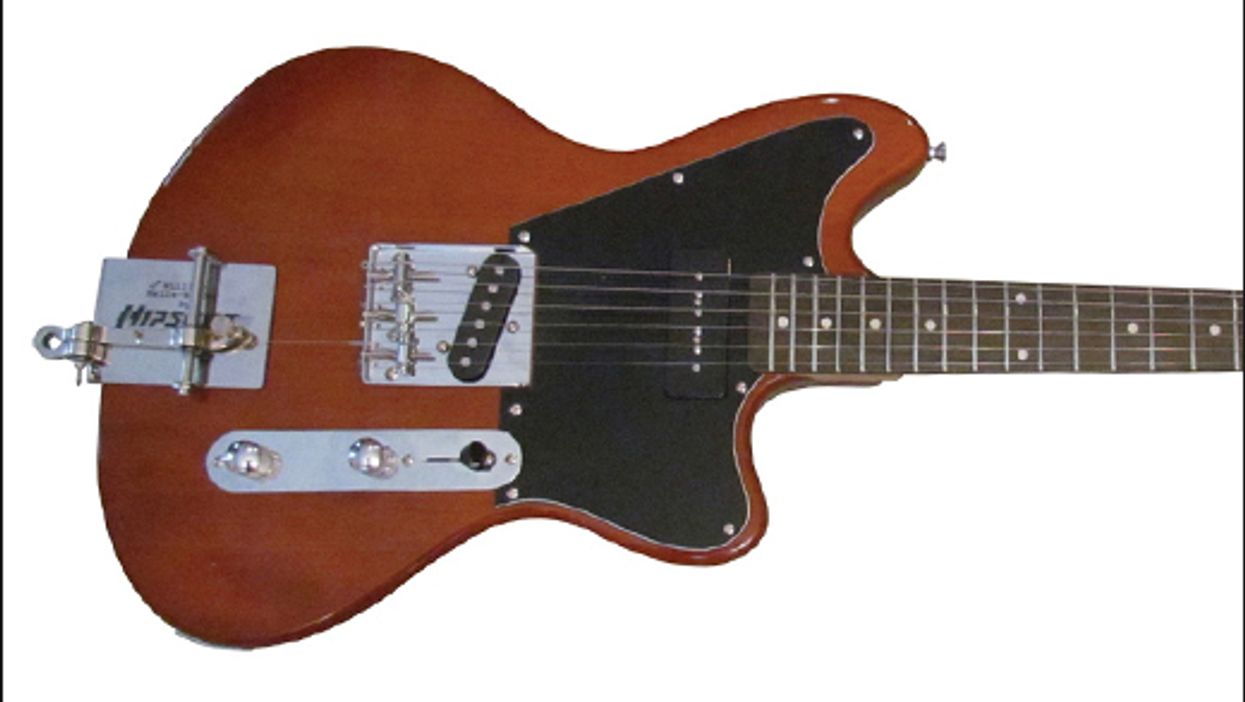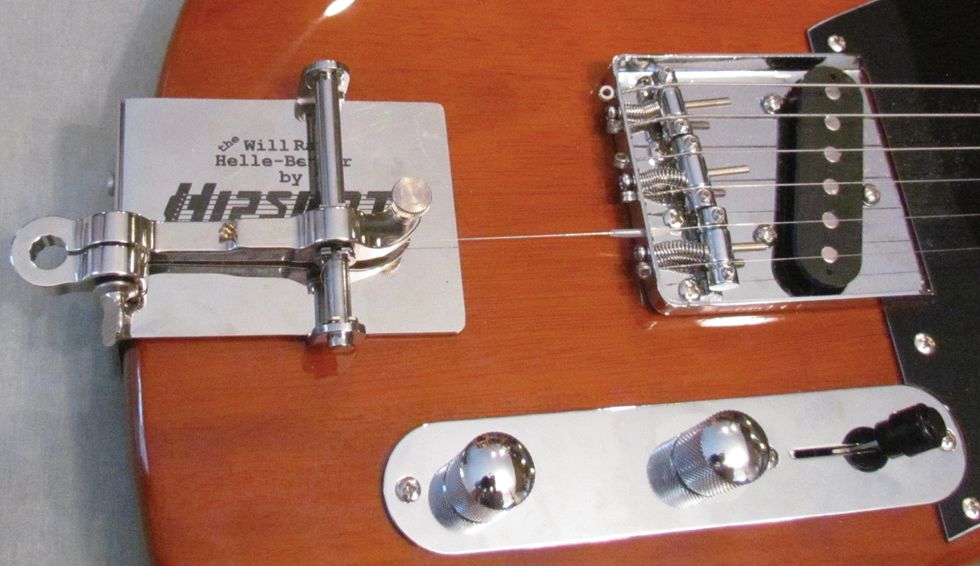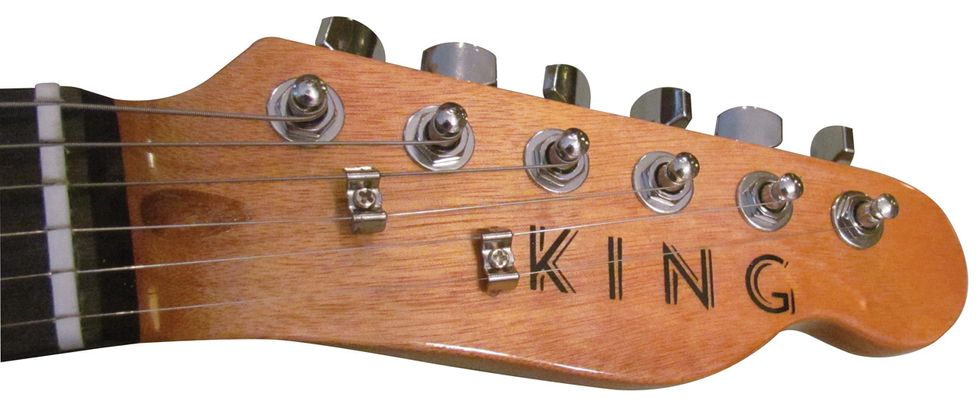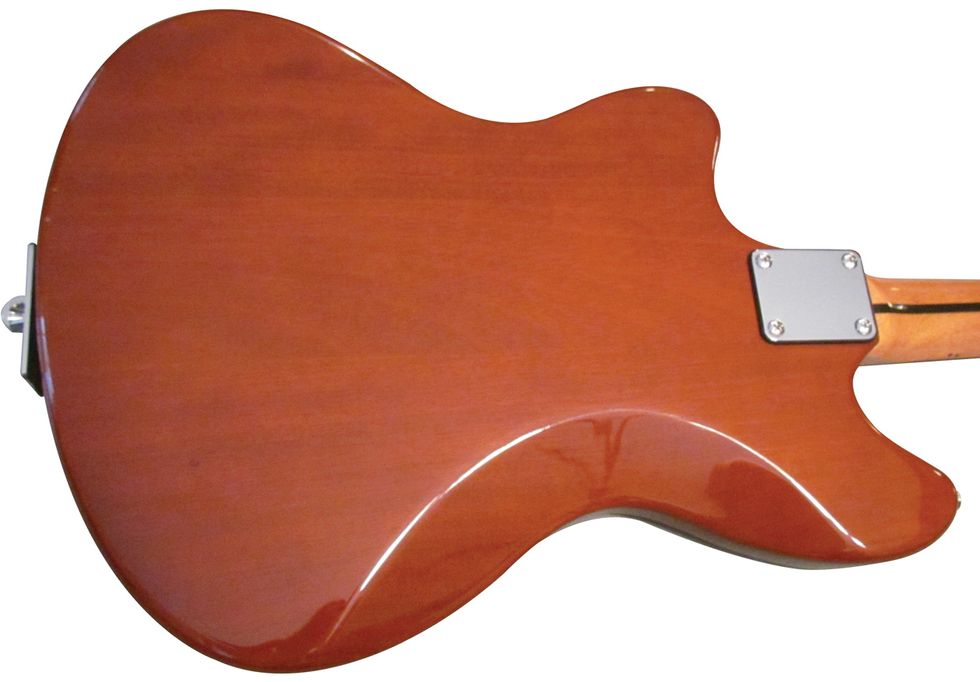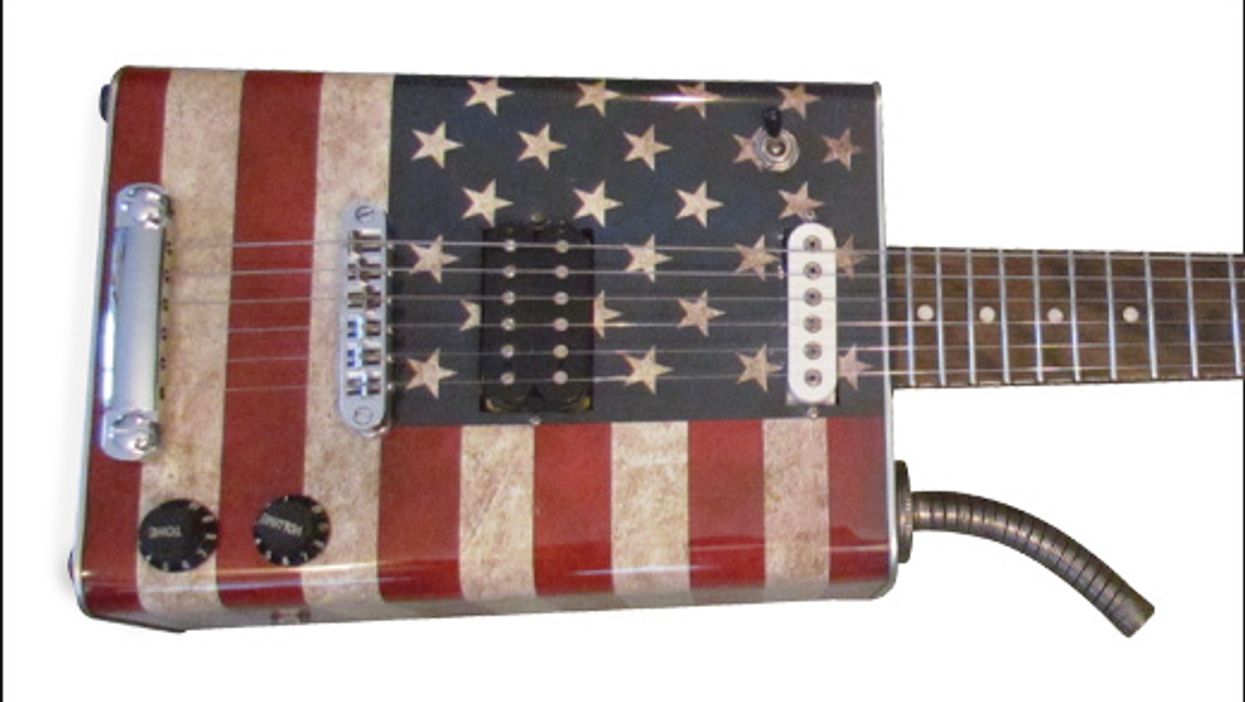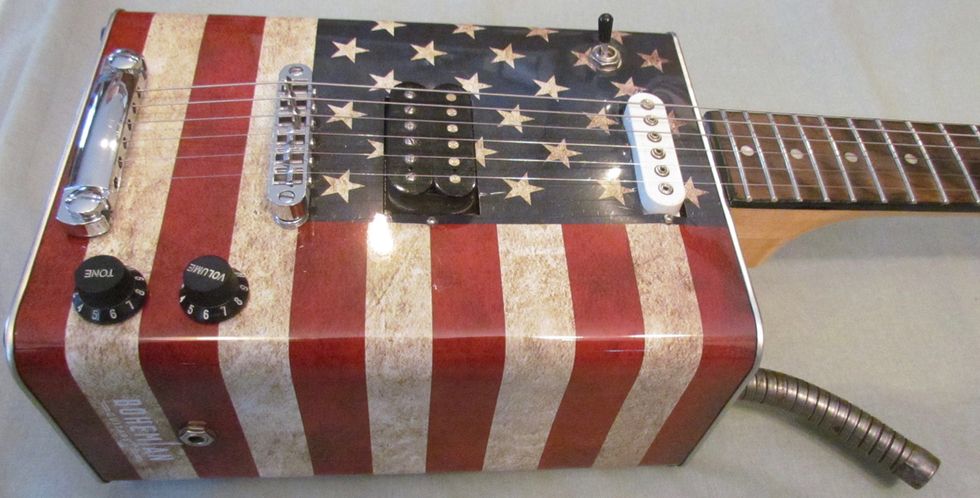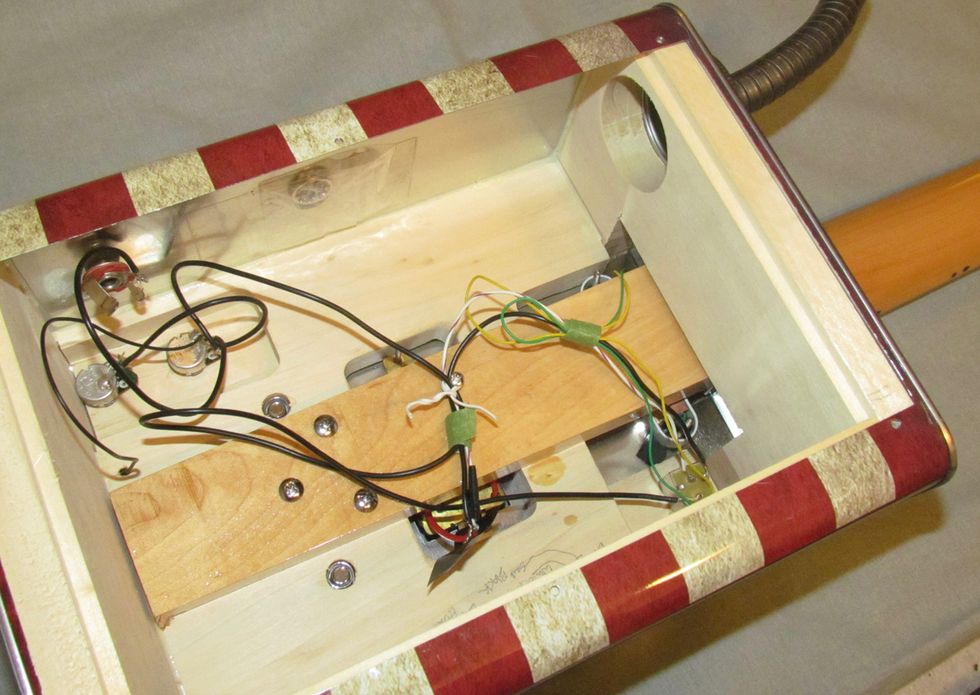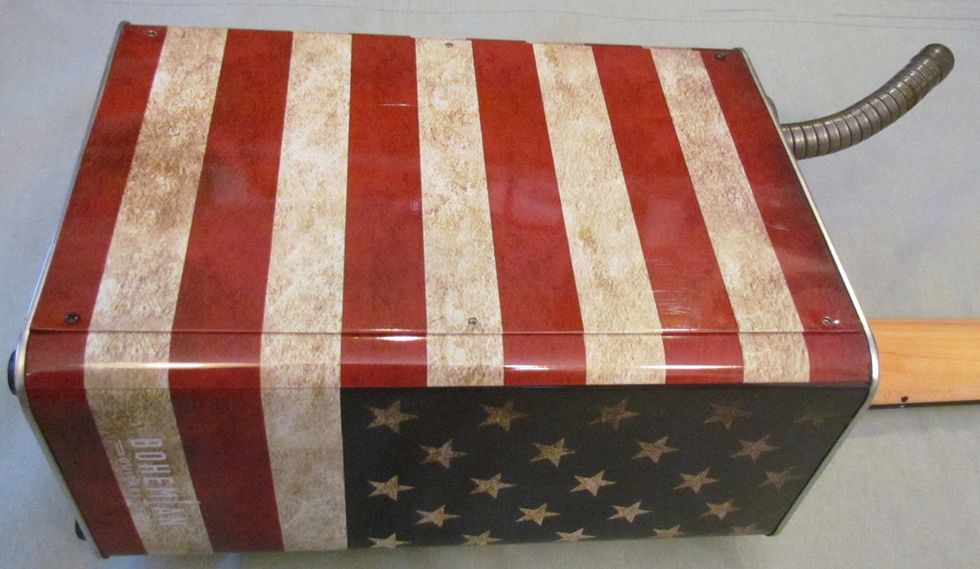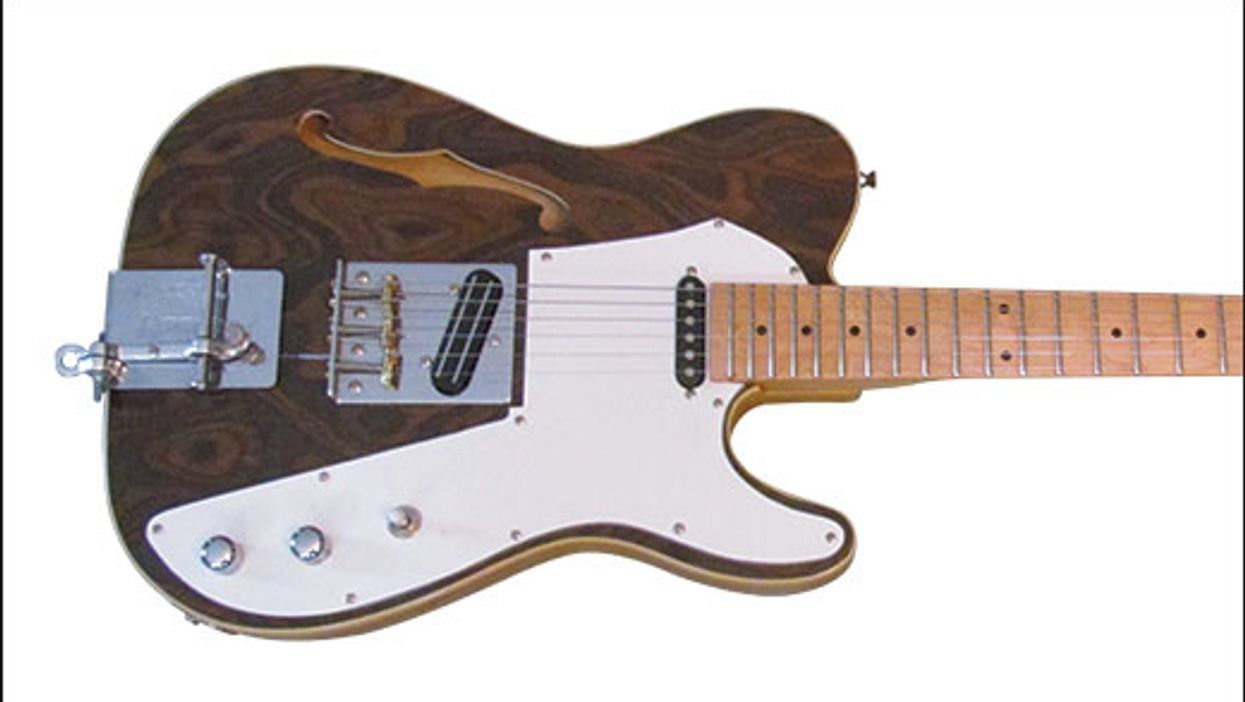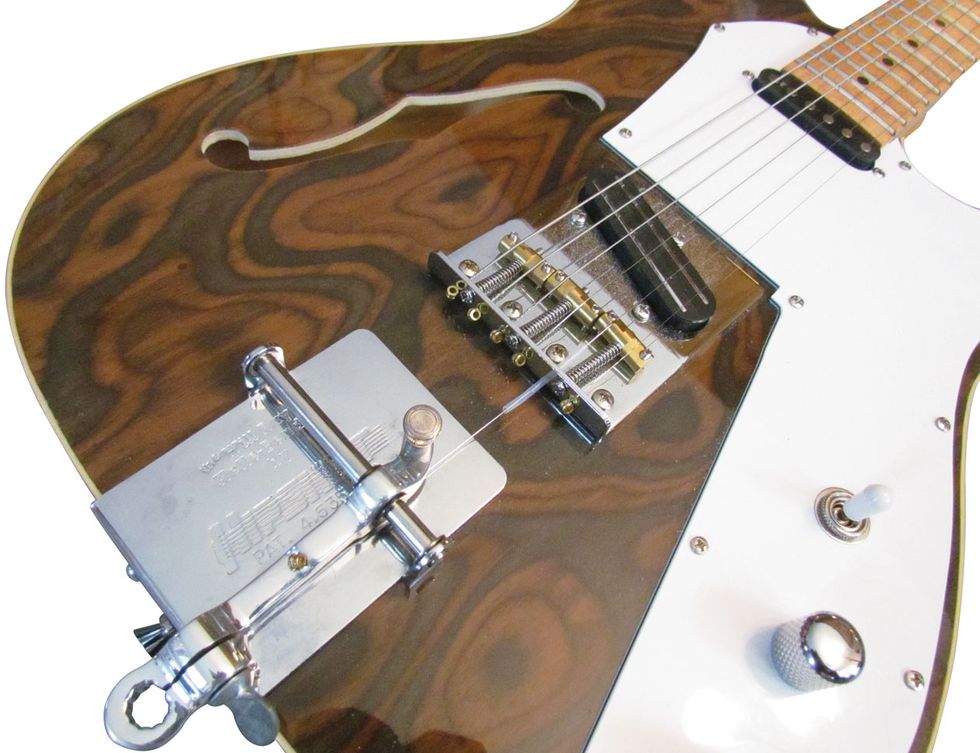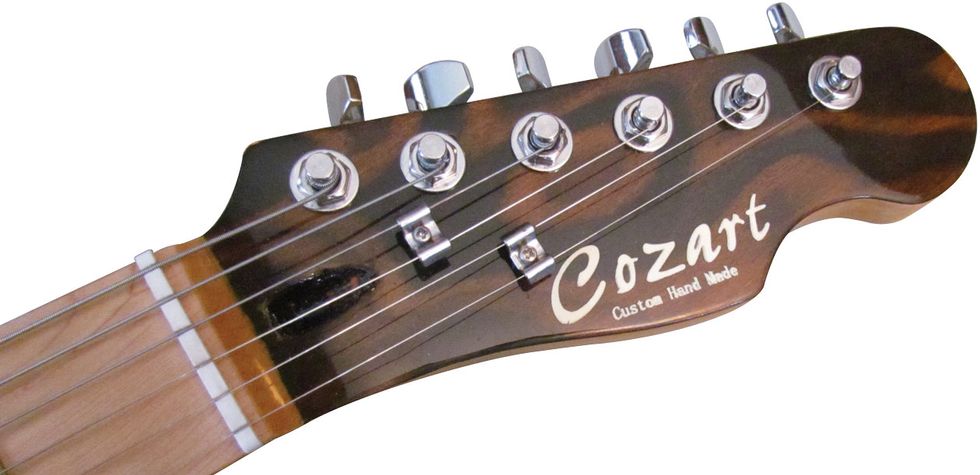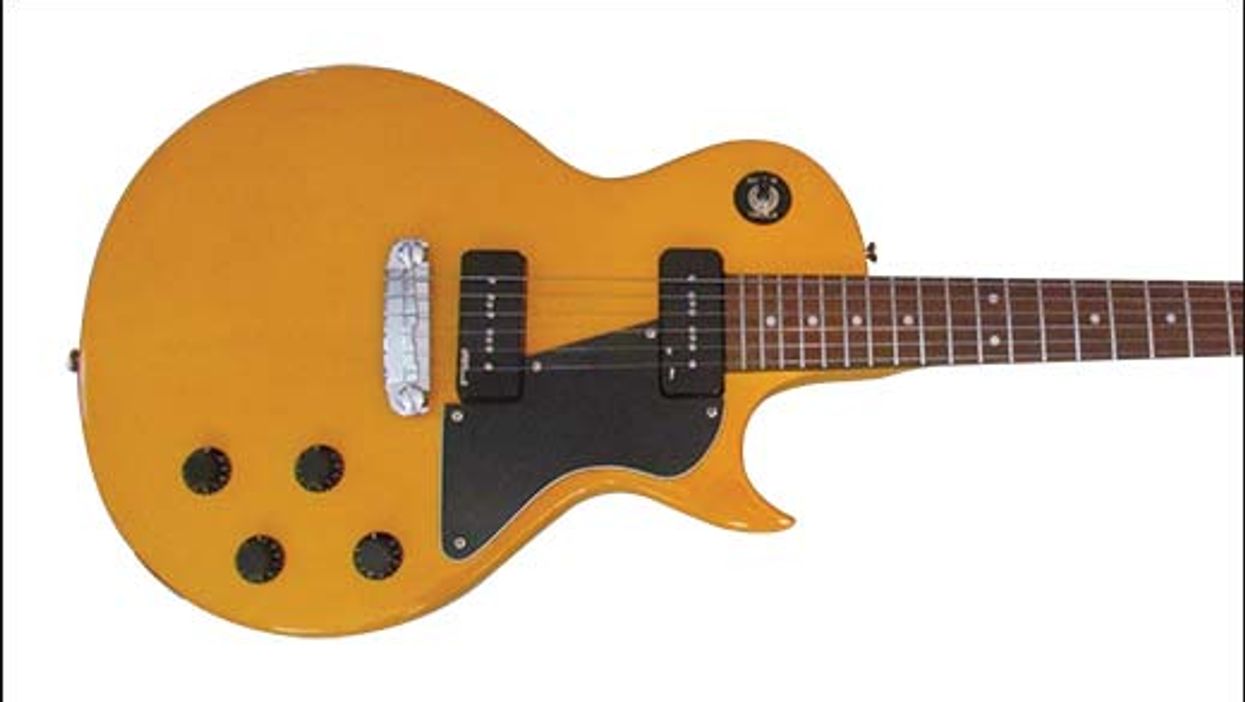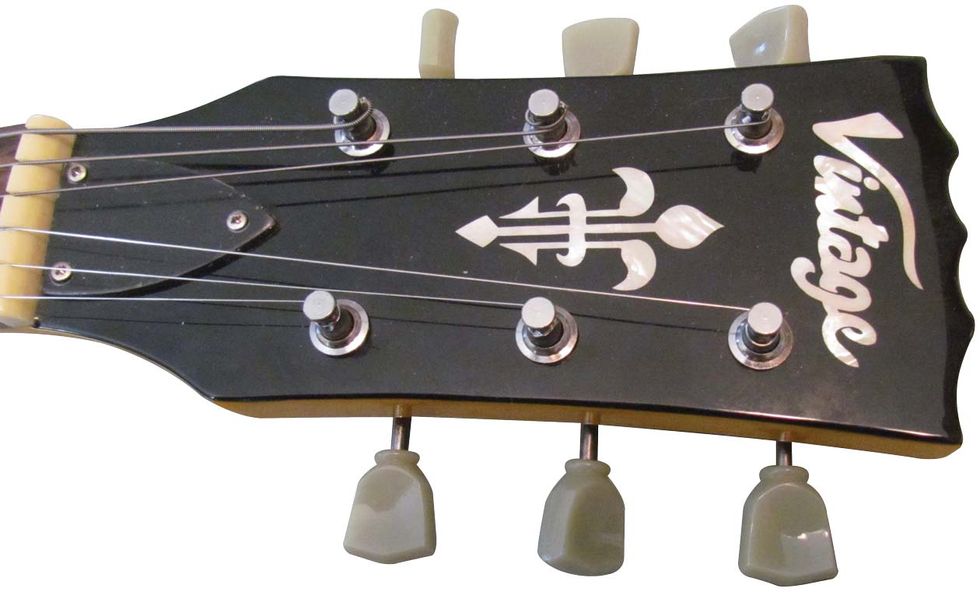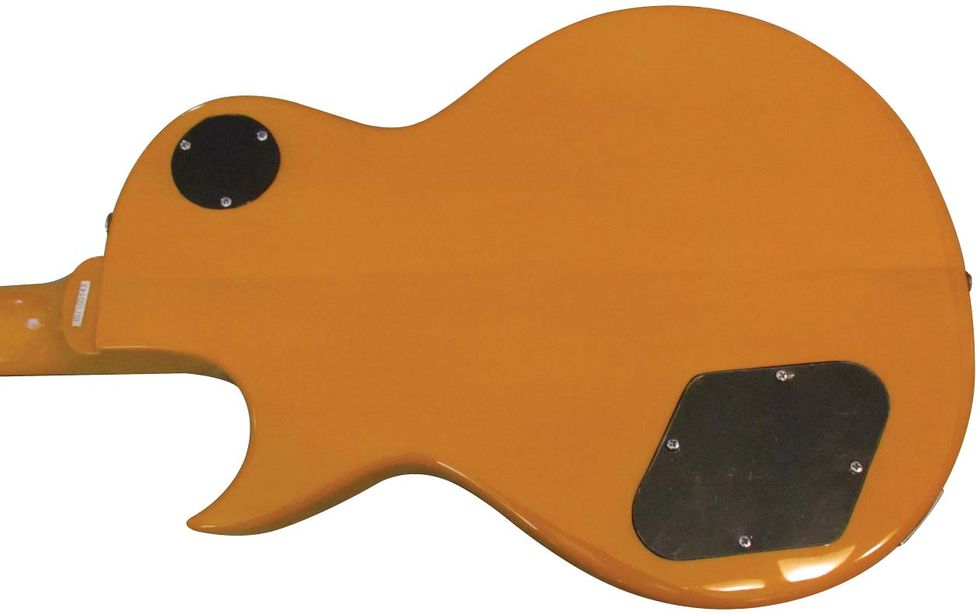I'm primarily a Tele player, but I have to profess my love for non-Fender-type guitars as well. I've owned probably a dozen or so Gibson SGs, for example, including some first-year models. Sadly, I let them all slip through my fingers over the years.
Note the rough and gouged wood along the upper contour of this instrument's body—signs of abuse from an attempt to strip off its original finish.
About five years ago, I was at a yard sale here in Asheville, North Carolina, when I came across this month's guitar. It's a Gibson SG Special that some knucklehead had started sanding before realizing it was more of a project than he or she wanted to undertake, so quit part-way through. Of course, they picked the worst place on a guitar to experiment on: the face. It was right along the beveled upper bout of the instrument.
Bottom Feeder Tip # 779: Never experiment on the front of a guitar. Always start on the back, just in case you change your mind part way through. That way it might still look okay when you're playing it onstage—or selling it.
Nothing like a Will Ray signature Hipshot B-Bender bridge to make this yard-sale find just right for Will Ray. He added it after the purchase, of course.
I wasn't sure I even wanted the guitar, since it looked kinda ugly, with the front partially sanded, but I decided to go over and play it. Wow! It played really nice! The seller also pointed out that it had a headstock repair from when it had fallen over a few years earlier. It wasn't done professionally and looked a little ragged. Strike two! Now I was even more leery, but then I played it some more and strangely started bonding with the poor thing. The asking price was $175 with a nice Gibson gig bag. After some haggling, I ended up paying $135 for it.
These Gibson Deluxe tuners have the same vibe as the Kluson Deluxe pegs that would have been found on first-year models of this guitar, from 1961.
When I got it home, I did some research on it and to my dismay I saw that this model was not going for around $1,200 like I'd originally hoped, but instead was only going for $300 to $400 used. And those were in better shape than mine. I decided to write it off as a hard lesson learned—just eat it and move on. I picked it up later and was reminded of why I bought it in the first place: It's a great playing guitar! It has that unmistakable Gibson feel. I plugged it in, and instead of hearing that typical darker humbucker sound, this guitar sounded much brighter and P-90-like than I expected. Then I looked at the stop-bar tailpiece and went, “hummm ... I wonder what would happen if I slapped a Hipshot bender on it?" So I did, and it works great on this 6-string. Next, I painted over the sanded-off area with some gold paint, and instead of looking ugly, it looks ... kinda interesting.
So, is it a keeper? For now it is. Visit this story online to listen to my sound sample. You can hear it sing like a songbird, but also roar like a bear. I also dig how high up the fretboard you can play.




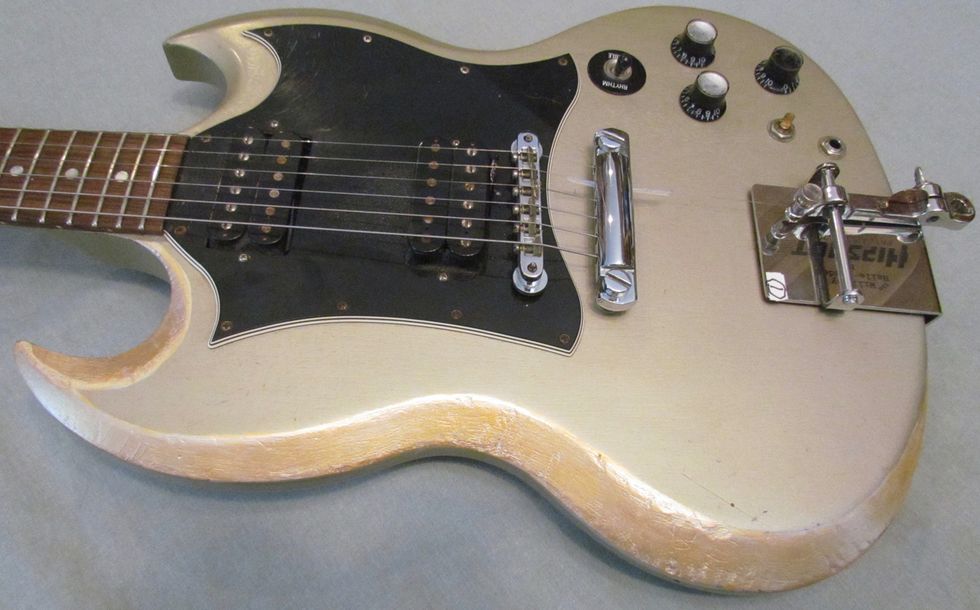
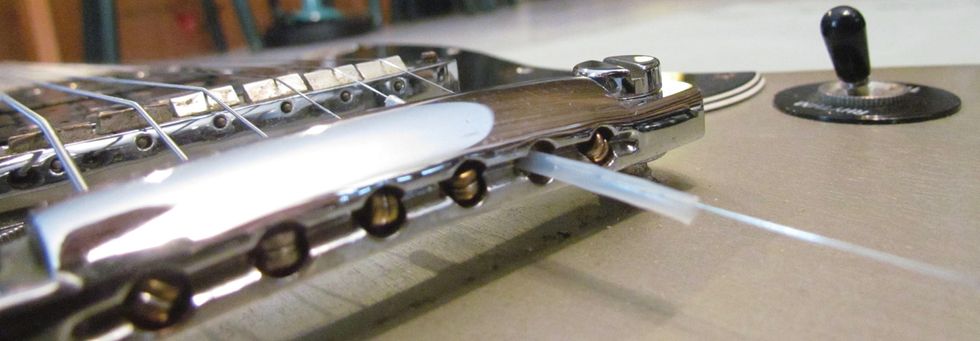
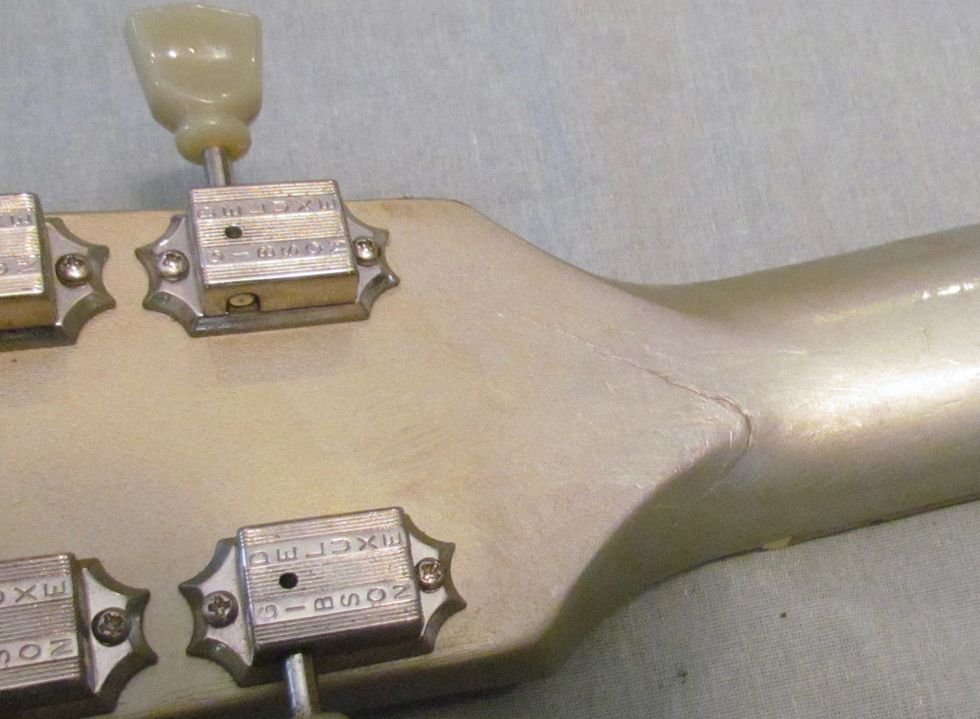
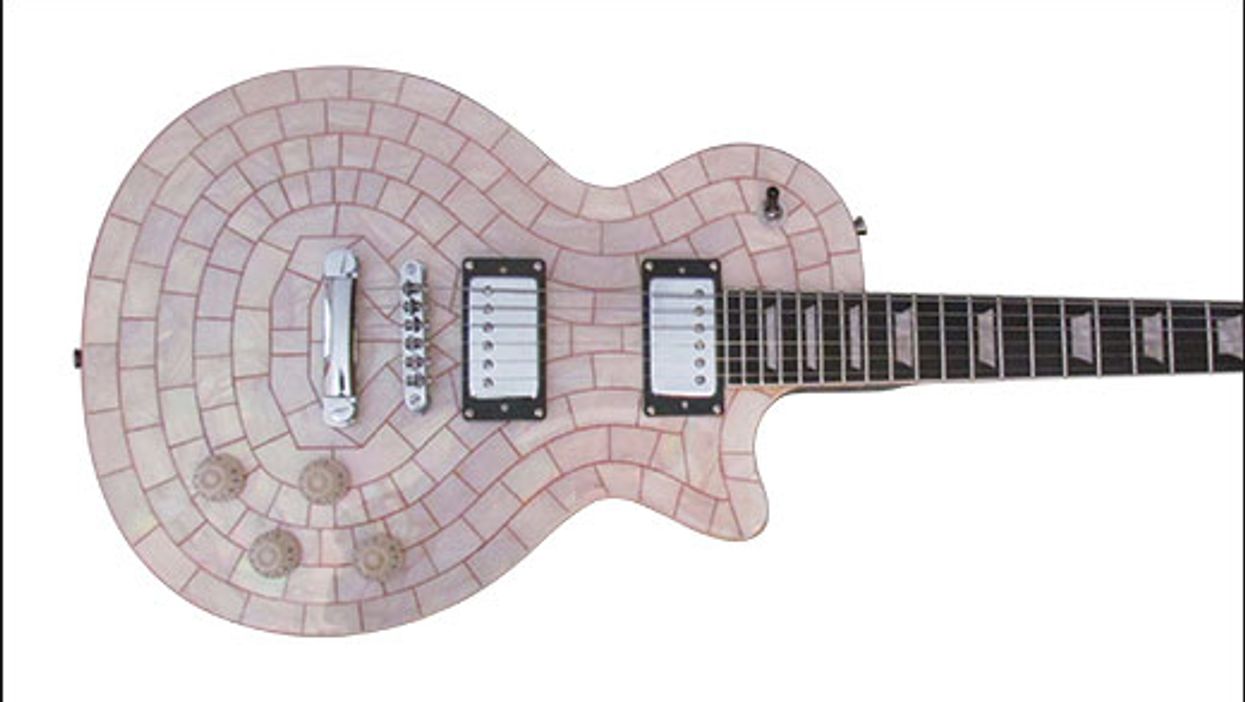
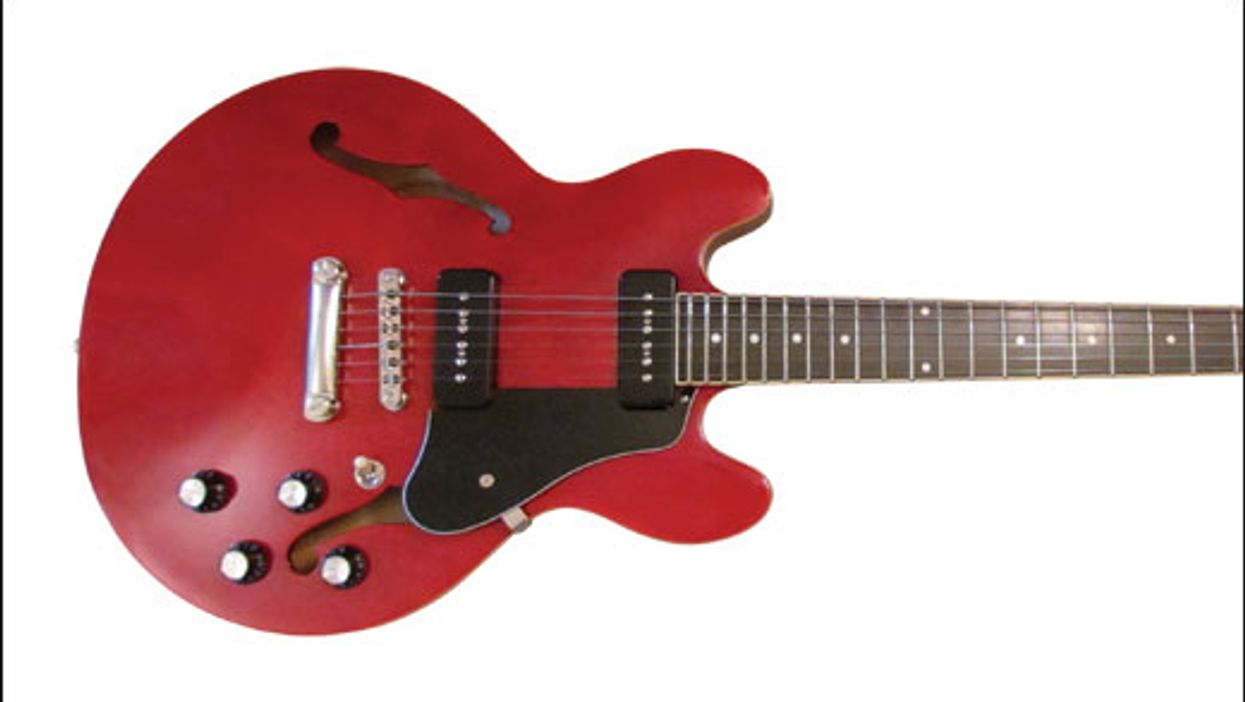
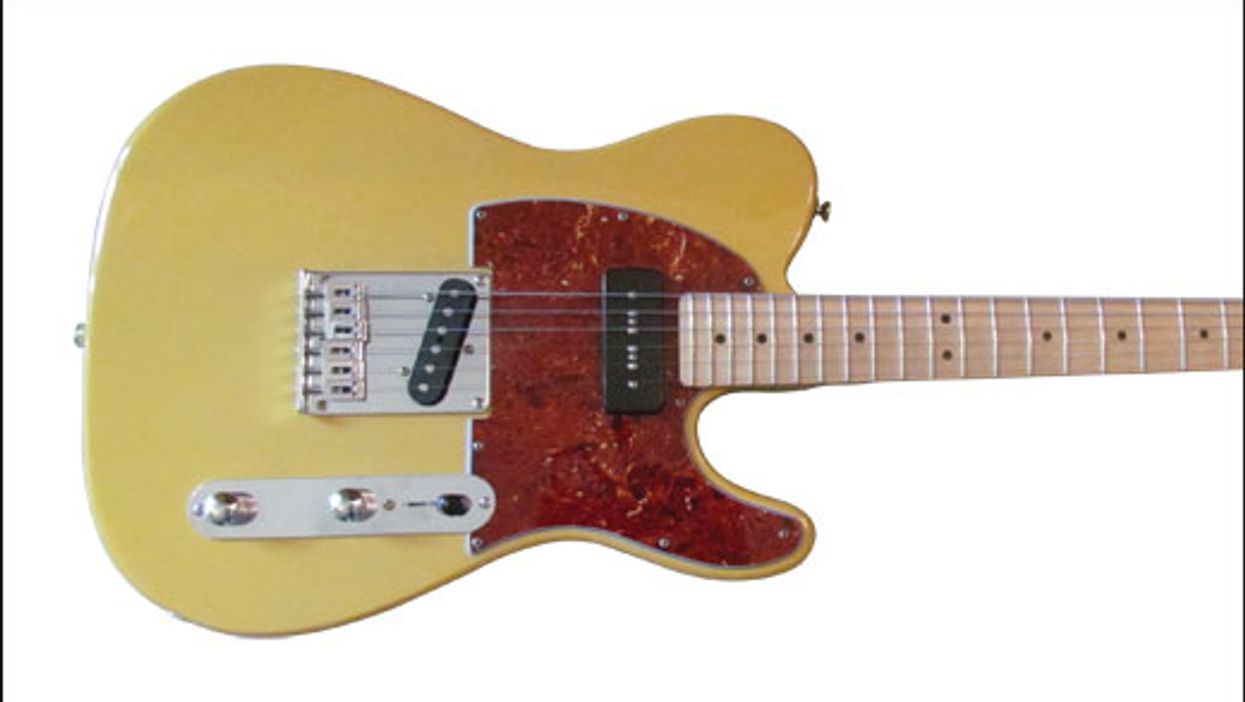
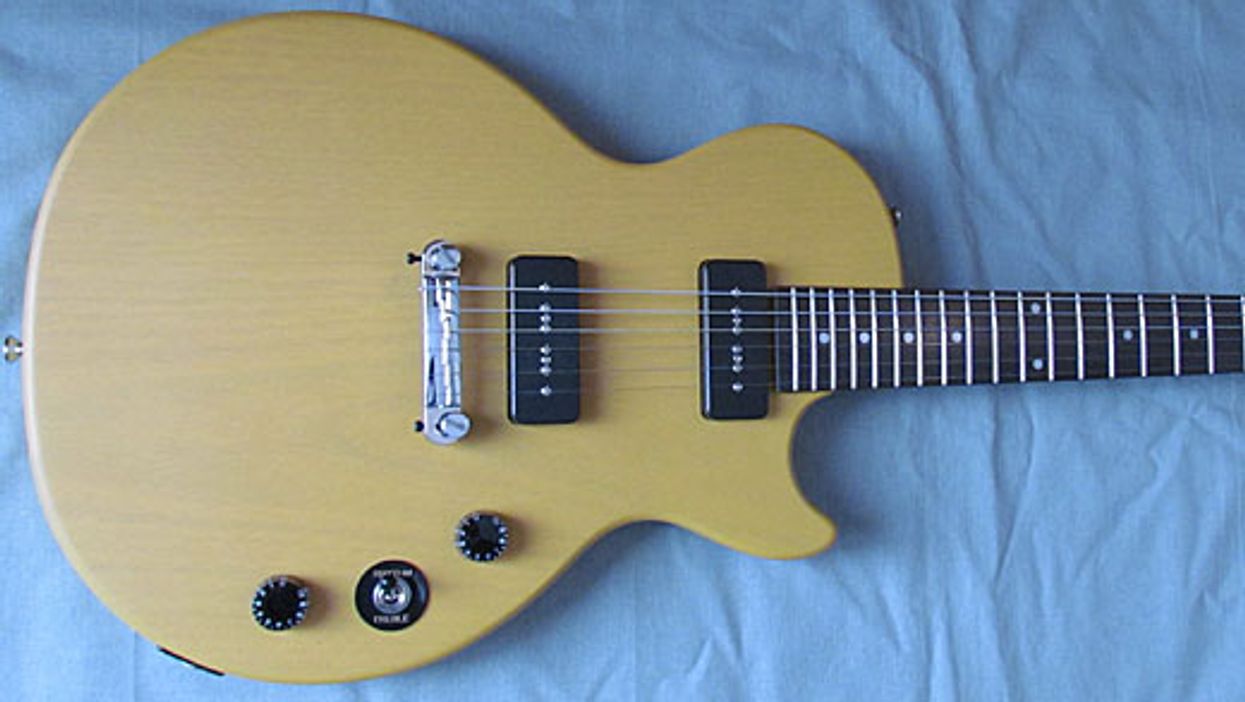
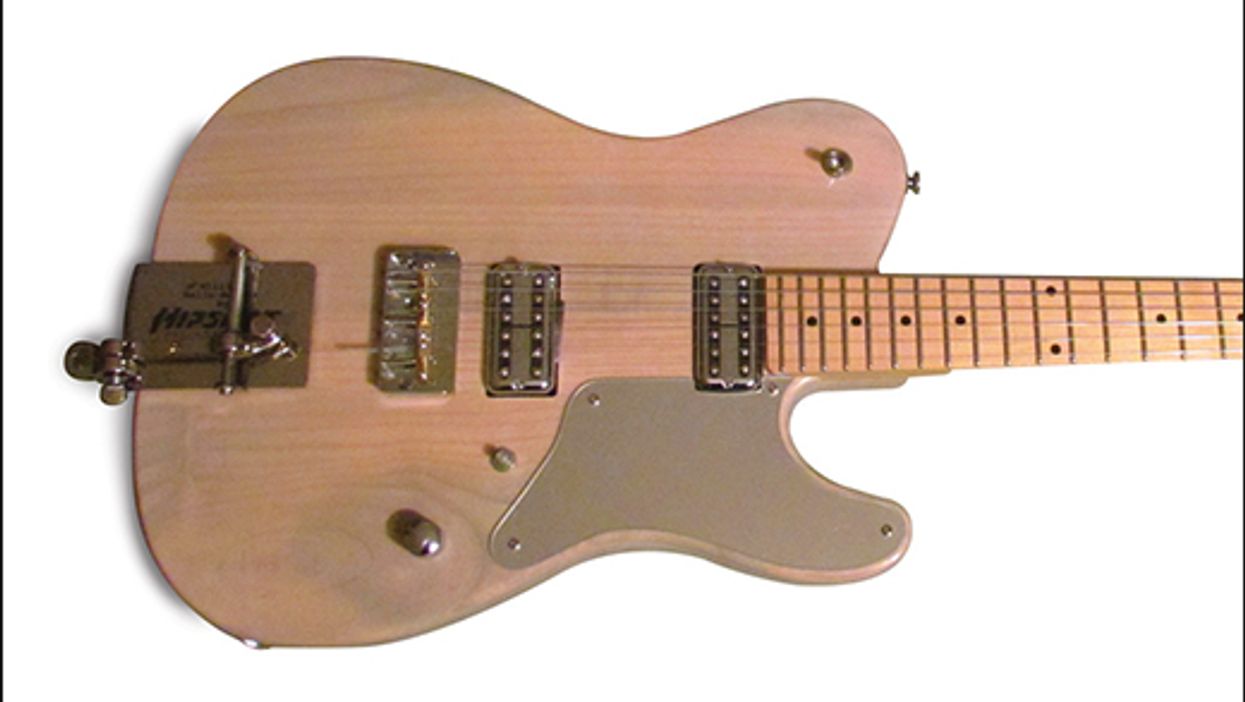
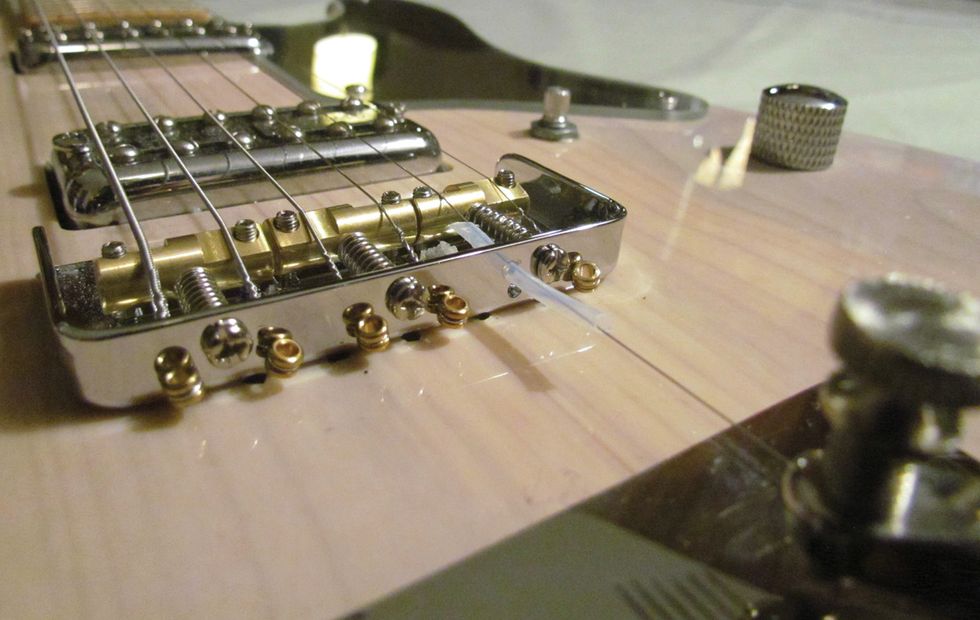
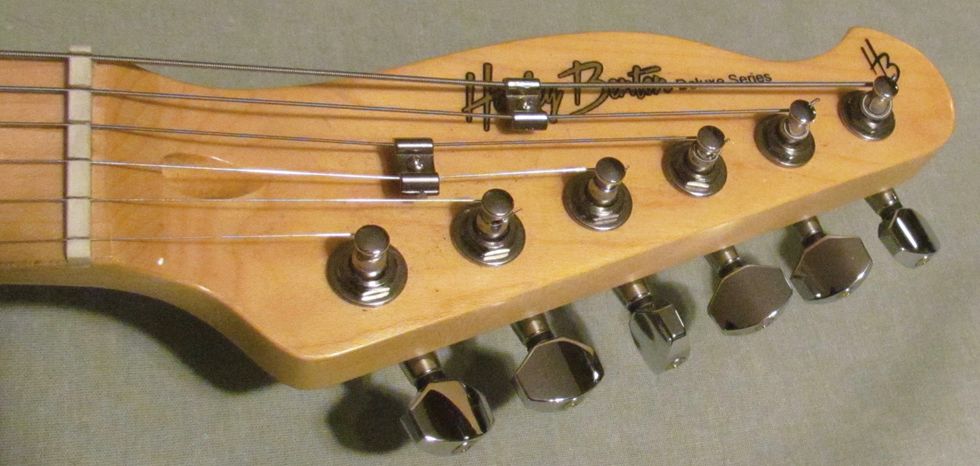
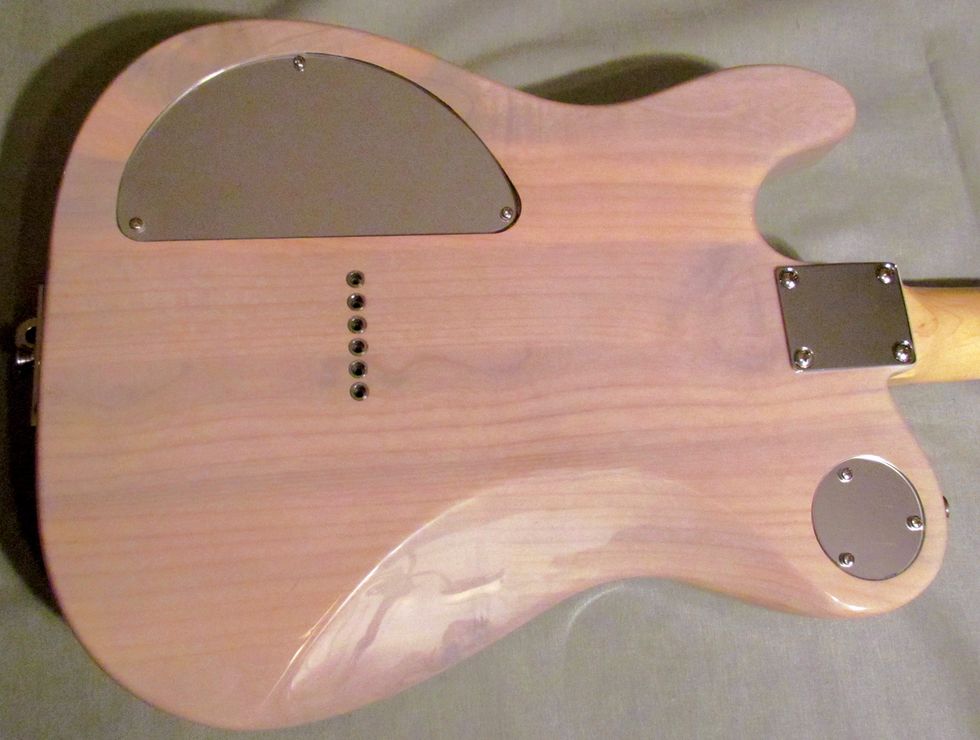


![Rig Rundown: Russian Circles’ Mike Sullivan [2025]](https://www.premierguitar.com/media-library/youtube.jpg?id=62303631&width=1245&height=700&quality=70&coordinates=0%2C0%2C0%2C0)



